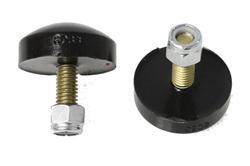dusterglenn
Well-Known Member
What's the minimum gap for the lower control arm bump stops?
What's the minimum gap for the lower control arm bump stops?
I've just installed PST 1.030" bars, and have the stock bump stops. Currently have about a 1/2" gap with the stance just about where I want it.

It's one of the reasons I want bigger torsion bars.
With my car's current stance, Hotchkis adj. shocks and 1" bars, the (trimmed) bumpstops still get quite a workout at times, especially when you encounter about 20 to 40 speedbumps everyday like me.
